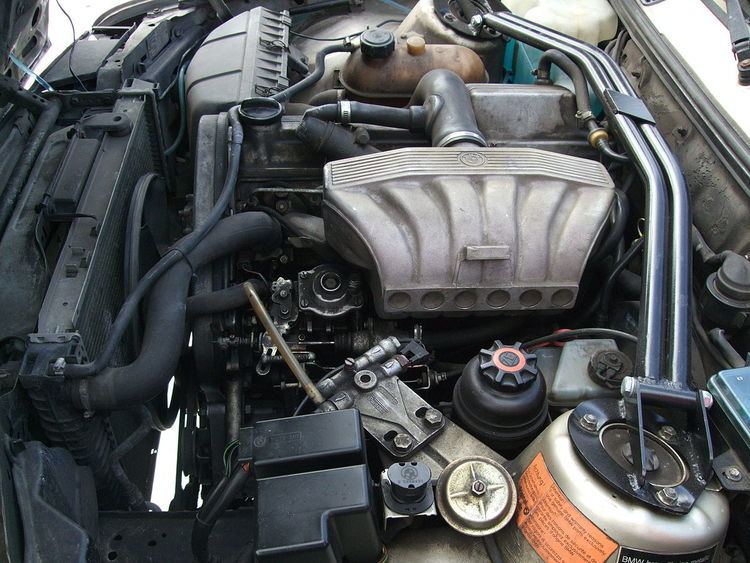Configuration Inline-6 Cylinder bore 80 mm | Production 1983–1991 Displacement 2443 cm³ Piston stroke 81 mm | |
 | ||
The BMW M21 is a six-cylinder-inline-diesel engine developed by the bavarian engine manufacturer BMW. The engine with swirl chamber injection is based on the otto engine M20 and was produced for BMW by the upper Austrian Steyr engine plant from 1983 to 1991. It was succeeded by the M51.
Contents
Background
In the 1970s BMW decided to develop an engine, which would both be powerful and have a good fuel economy. This was caused by the oil crisis in 1973. In 1975 a group of BMW engineers started working on the M21 diesel engine, the otto engine M20 was taken as the basis. In 1983 at the IAA, the first passenger car was shown to the public which made use of the 85 kW M21. It was the E28 524td, which has a top speed of 180 km/h and reaches 100 km/h in 12,9 s. This 5er-BMW was the fastest series production diesel car in the world back in 1983. It has a fuel economy of 7,1 l /100 km.
Technical description
The M21 is a water-cooled and swirl-chamber-injected six-cylinder-inline-diesel-engine with a cast iron block and OHC valvetrain. The camshaft is driven by a belt, each cylinder has one inlet and one outlet valve. Compared to the otto engine M20, the M21 has reinforced connecting-rods, cylinder heads, pistons, valves and a reinforced crankshaft with seven bearings.
For faster engine startup the M21 has a glowplug system called instant start, which reduces the time to reach starting temperature compared to similar diesel engines. The fuel is injected into swirl chambers.
A Garret turbocharger is used (without an intercooler). Initially, the M21 was only available as a turbocharged engine. In 1985, BMW introduced a naturally aspirated version of the M21, which was popular in countries with a high motor vehicle tax.
Initially, the fuel injection system was controlled mechanically. In 1987, this system was replaced by an electronic diesel control system, which increased the torque output by 10 N·m (7 lb·ft). The updated engine has a smaller turbocharger, which improves response.
Models
Applications:
